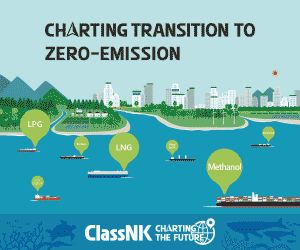The Mærsk Mc-Kinney Møller Center for Zero Carbon Shipping (MMMCZCS) has issued a report on a concept design for a 3,500 TEU ammonia-fueled container feeder vessel, highlighting its technical feasibility, safety features, and potential for near-term deployment.
According to MMMCZCS, as a carbon-free molecule, ammonia offers numerous advantages as a maritime fuel. When produced with renewable energy (e.g., e-ammonia), ammonia reduces well-to-wake GHG emissions by up to 97% compared to low-sulfur fuel oil. With that said, emissions from the combustion of ammonia are still under study, and their environmental impact is uncertain. Despite these advantages, the adoption of ammonia as a maritime fuel poses several challenges, including:
- Ammonia toxicity, corrosivity, flammability, and significant safety risks to humans and the environment.
- The need to understand and evaluate the various risks, including those associated with human factors. This evaluation enables the implementation of appropriate design and operational safeguards early in the design process, which encompasses both engineering and administrative controls, to reduce risk to ‘as low as reasonably practicable’ (ALARP).
- Careful handling of ammonia onboard, together with robust safety measures and procedures to manage risks.
- Technological infrastructure and equipment onboard are still under development, and key components, like auxiliary combustion, need further advancement.
- Larger space allocation for ammonia fuel storage (2.94 times higher volumetric ratio per unit heating) because of ammonia’s lower volumetric energy density (0.696 t/m 3) compared to marine gas oil.
Furthermore, a strong focus in the publication is our safety approach and how risk to the crew from ammonia fuel is minimized in our design, as well as how the design decisions can be optimized to support both safety and space utilization on board the vessel.
Examples of safety decisions include:
- Dividing fuel preparation areas into smaller independent rooms to limit crew exposure during a leak.
- Positioning vent and ventilation masts based on fluid dynamics analysis to minimize exposure risk.
- Equipping the ammonia storage tank with a full secondary barrier, insulated inter-barrier space, pressure contol systems, and dual reliquefaction plants.
This ammonia-fueled feeder vessel design has received Approvals in Principle from two classification societies, demonstrating its readiness for practical application.

































































